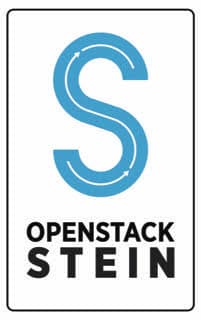 Today the OpenStack community announced the release of its 19th version its open source cloud infrastructure software, Stein. The latest update enhances bare metal and network management while allowing the launch of Kubernetes clusters much faster. OpenStack Open Infrastructure Summit is right around the corner in Denver, Colorado (April 29-May1). StorageReview will be in attendance at the show.
Today the OpenStack community announced the release of its 19th version its open source cloud infrastructure software, Stein. The latest update enhances bare metal and network management while allowing the launch of Kubernetes clusters much faster. OpenStack Open Infrastructure Summit is right around the corner in Denver, Colorado (April 29-May1). StorageReview will be in attendance at the show.
Today the OpenStack community announced the release of its 19th version its open source cloud infrastructure software, Stein. The latest update enhances bare metal and network management while allowing the launch of Kubernetes clusters much faster. OpenStack Open Infrastructure Summit is right around the corner in Denver, Colorado (April 29-May1). StorageReview will be in attendance at the show.

OpenStack software now powers over 75 public cloud data centers, not to mention thousands of private clouds. OpenStack is run on over 10 million compute cores. Because of its nature it is ideal for diverse architectures (bare metal, virtual machines (VMs), graphics processing units (GPUs) and containers) as well as places that have multiple vendors.
The latest release still offers the previous benefits while bringing new features for edge computing networking and NFV uses cases. Stein brings improvements to both resource management and tracking. Stein also delivers core functionality for Kubernetes users. Kubernetes, unsurprisingly, has become the number one container orchestration framework running on OpenStack.
New core infrastructure management features include:
- OpenStack Magnum, a Certified Kubernetes installer, improved Kubernetes cluster launch time significantly—down from 10-12 minutes per node to five minutes regardless of the number of nodes.
- With the OpenStack cloud provider, you can now launch a fully integrated Kubernetes cluster with support from the Manila, Cinder and Keystone services to take full advantage of the OpenStack cloud it’s created on.
- Neutron, OpenStack’s networking service, has faster bulk port creation, targeting container use cases, where ports are created in groups.
- Ironic, the bare metal provisioning service, continues to improve deployment templates for standalone users to request allocations of bare metal nodes and submit configuration data as opposed to pre-formed configuration drives.
- Networking enhancements delivered for 5G, edge computing and NFV use cases
- Within Neutron, Network Segment Range Management enables cloud administrators to manage segment type ranges dynamically via a new API extension, as opposed to the previous approach of editing configuration files. This feature benefits StarlingX and edge use cases, where ease of management is critical.
- For network-heavy applications, it is crucial to have a minimum amount of network bandwidth available. Work began during the Rocky cycle to provide scheduling based on minimum bandwidth requirements, and the feature was delivered in Stein. As part of the enhancements, Neutron treats bandwidth as a resource and works with the OpenStack Nova compute service to schedule the instance to a host where the requested amount is available.
- API improvements boost flexibility, adding support for aliases to Quality of Service (QoS) policy rules that enable callers to execute the requests to delete, show and update QoS rules more efficiently.
- Improved resource management and tracking
- Blazar, the resource reservation service, introduced a new Resource Allocation API allowing operators to query the reserved state of their cloud resources.
- Placement is a new project introduced in the Stein release. Extracted from the Nova project, Placement offers the ability to target a candidate resource provider, easing the task of specifying a host for workload migration. This increases API performance by 50% for common scheduling operations. The internal Placement service in Nova will be removed by the Train release. At that point Nova installations should make use of the separate Placement service.
- Sahara, a project for easily provisioning Hadoop clusters, has been refactored into a core+plugins architecture, making it easier to take advantage of this functionality.
- Additional Highlights
- Keystone—The OpenStack identity service introduced multi-factor authentication receipts in the Stein release, which facilitates a much more natural sequential authentication flow.
- Kolla—The service for providing production-ready containers and deployment tools has added support for performing full and incremental backups of the MariaDB Database.
- Senlin—Driven by leadership from the Blizzard Entertainment team, APIs in the Senlin clustering service now issue synchronous failures in case of cluster/node lock, cooldown in effect or action conflict. Operators also can now remove completed actions using an action-purge subcommand in the senlin-manage tool. This is useful for long-running clusters that have accumulated a large number of actions in the database. Overall, upgrades made to Senlin in Stein can improve operations performance by several orders of magnitude.
Sign up for the StorageReview newsletter

